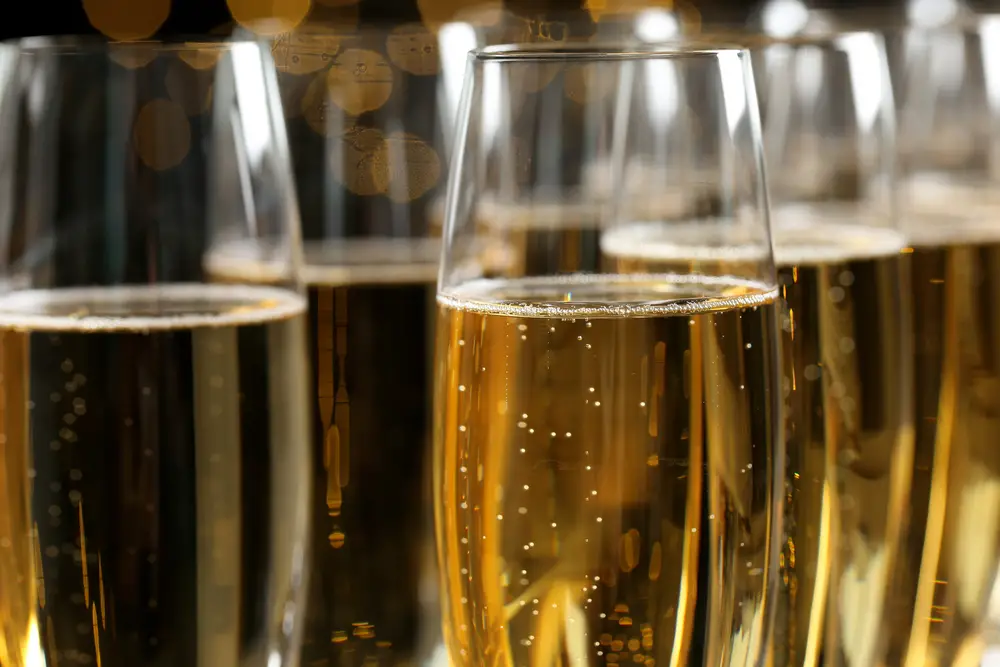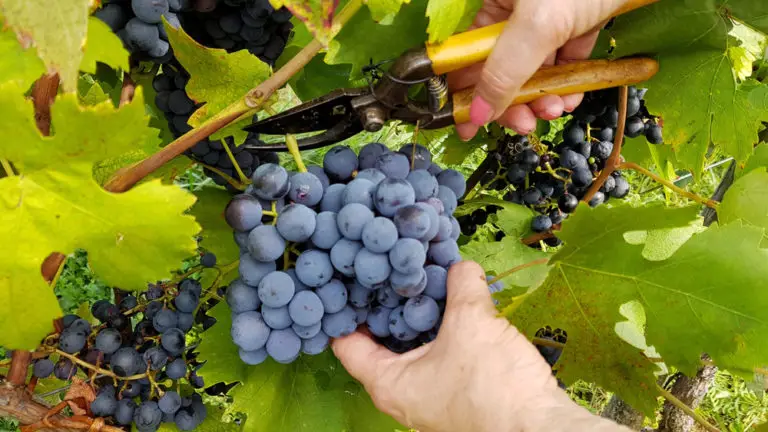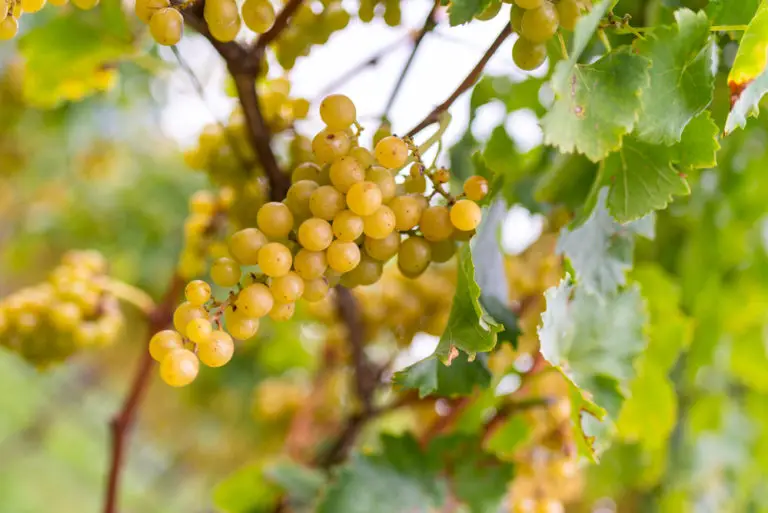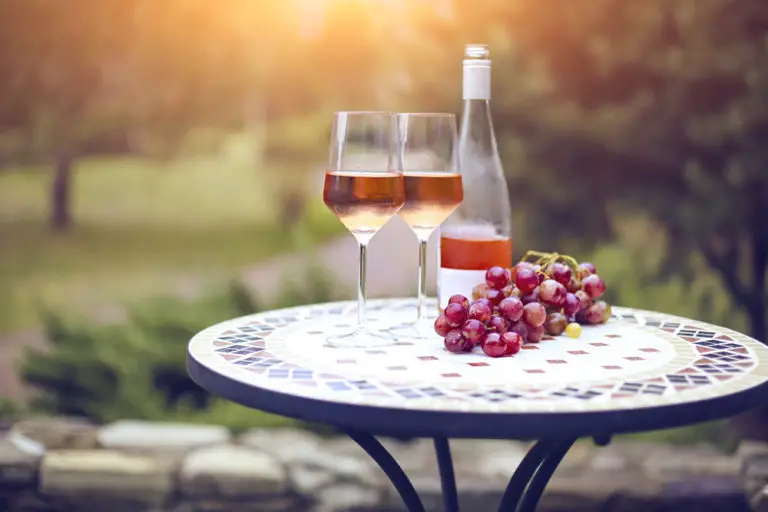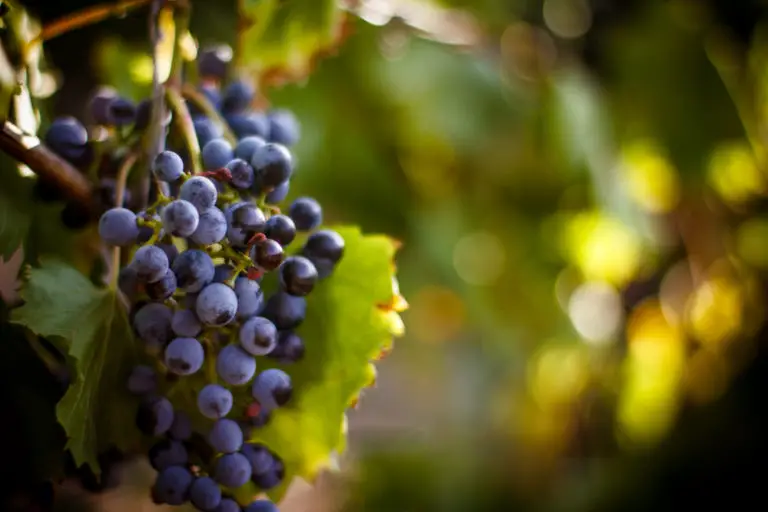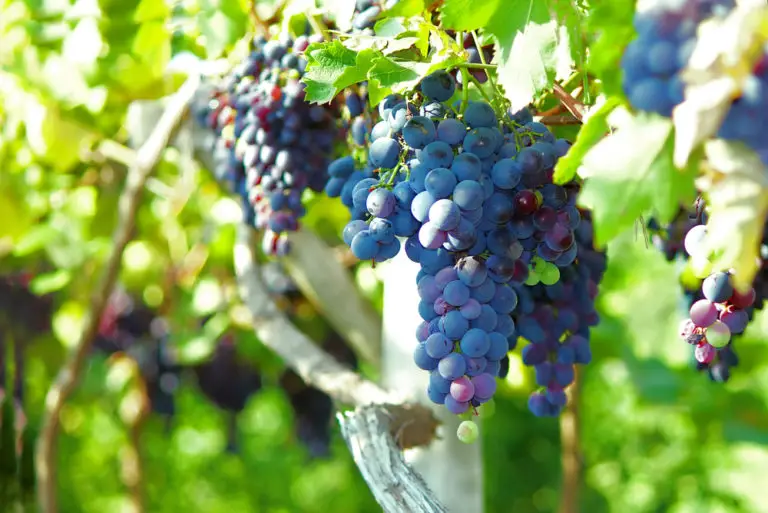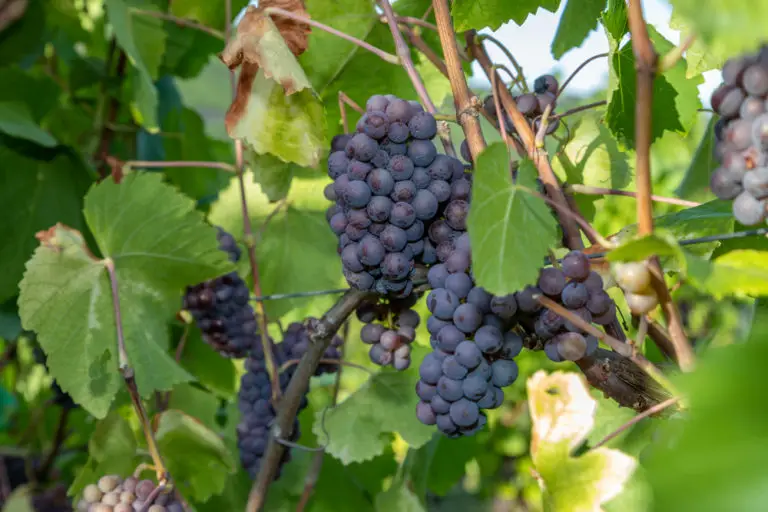Sparkling Wine for Beginners (Everything You Need to Know)
Sparkling wine adds glamor and fun to every occasion.
However, today there is such a huge choice of bubbly wines from around the world that knowing the best choice for your event or dinner table is daunting.
For the lowdown on how bubbly wines differ in taste, quality, and price, read on.
- What is Sparkling Wine?
- Sparkling Wine Characteristics
- Types of Sparkling Wines
- Levels of Sweetness of Sparkling Wines
- Sparkling Wine’s Ageability
- How Should Sparkling Wine Be Served?
- Countries Known for Sparkling Wines
- How is Sparkling Wine Made?
- History of Sparkling Wine
What is Sparkling Wine?
The sparkling wine definition is a style that features effervescence or fizz because of the presence of carbon dioxide in the liquid. The presence of this gas is a result of a range of different processes in the winery.
For example, Champagne and Prosecco are both sparkling wines but each gets its bubbles through very different methods that influence the taste, character, and price of the final product.
One of the basics of sparkling wine is that there are both white and red styles.
The clue about what makes sparkling wine unique is in its name: its bubbles. While still wine showcases the character of different grapes and sweet wine has extra sugar making it versatile in food pairing, sparkling wine alone has what is technically referred to as its mousse or bubbles.
There are different kinds of mousse and the wine itself can be dry or sweet making for a wide selection across this style.
It’s worth noting that people often associate sparkling wine with expense, but the fact is that there’s a bubbly for every pocket, taste, and occasion!
Sparkling Wine Characteristics
To understand this wine completely, let’s look at some sparkling wine basics. Bubbly (as it is affectionately nicknamed) isn’t identical from country to country or even from region to region.
Its mousse can be delicate or powerful. It can appear in red, white, or rosé colors, the sweetness level can range from super-dry to super-sweet, and the flavor can be gentle to very fruity.
Bubbly wines are made differently from stills and sweets. The unique approach often begins in the vineyard with the sparkling wine grapes that are grown, how they’re trellised and harvested.
That being said, most of what gives sparkling wine its special character goes on in the winery.
Producers make bubbly in an entirely different way to other styles across fermentation, blending, aging, adjusting sweetness levels, storing, and bottling. A bubbly wine is pretty special, so it makes sense that it takes unique skill and processes to create it.
Types of Sparkling Wines
Sparkling wine 101 says that making bubbly involves one of several approaches.
These are the traditional method (Champagne), the transfer method (the same as Champagne but made in other regions), the tank method (Prosecco), the Asti method (Asti), ancestral method (many natural bubblies), and carbonation (a simple fizzy Chardonnay for example).
So, you see, fizz is not all the same!
Fully Sparkling Wine
As a guide to sparkling wine for beginners, the pressure of bubbly is measured in atmospheres or bars. The levels range from anything up to about six atmospheres. To compare, a car tire tends to have between two and three atmospheres.
Fully sparkling wine has five to six bars of pressure. This is very high which is one reason why there’s a specific method of opening such bottles devised to cause minimal harm with a flying cork!
Sparkling Wine is one term that defines this level but, depending on the country, you’ll also see Crémant (France), Spumante (Italy), and Espumante (in Chile and Portugal).
These wines have a very fizzy texture and flavors emerge most powerfully when bubbles have subsided.
Semi-Sparkling Wine
Semi is another type of sparkling wine. This kind has pressure levels below 2.5 bars. As well as the Semi-Sparkling label, sparkling wine names include Pétillant (France), Perlwein (Germany), and Frizzante (Italy).
Owing to the lower pressure, some producers use a handy screw cap closure for their semi-sparkling wines while fully-sparkling styles are mostly secured by a cork and cage.
This lighter style of bubbly has a creamy mouth feel owing to the gentle mousse. The production method tends to be anaerobic or free from the effects of air meaning the wine is made in steel rather than oak containers.
The resulting fizz has pure, simple, primary fruit flavors which range from light to pronounced.
Red Sparkling Wine
Popular sparkling wines include those made with red grapes. While most fizz is white or rosé, there is a range of fine red bubbly that’s worth trying.
Red fizz used to have a bad reputation, but the quality had improved with a variety made in both Old and New World regions.
Like sparkling white wine and rosé wine, red bubbly is made through a range of methods. At the frizzante end of the scale is candied berry-flavored Brachetto d’ Acqui, a red bubbly from Italy made with the tank method.
At the other end is sparkling Shiraz, a signature style from Australia made with the traditional method and displaying flavors of berries, cherries, and spice.
Sparkling Wine vs. Champagne
A common misconception is that, because they all have bubbles, all sparkling wines are the same. The fact is, Champagne is a sparkling wine but not all fizz is Champagne!
Champagne is a French sparkling wine and among the most expensive because of its complex production process known as the traditional method developed over centuries.
Making Champagne involves several steps that influence its taste, character, atmosphere, and sweetness levels. Other sparkling wines like Prosecco, Lambrusco, and Sekt, on the other hand, are made through more simple methods.
This doesn’t mean they aren’t deliciously refreshing though!
Another important point of difference is the grapes used in bubbly wine types. These vary and contribute to a different flavor profile in each style.
Levels of Sweetness of Sparkling Wines
Sparkling wine has a specific sweetness level determined in production. Traditional and transfer methods have the widest range starting at very dry Brut Nature and going to Doux or very sweet.
Sugar level depends on the liqueur d’expédition or dosage. This mixture of wine and sugar is added to the traditional and transfer method bubbly before bottling.
Brut Nature
Brut Nature or Zéro Dosage fizzy wine has 0-3 g/L of sugar. In the case of the traditional method sparkling wines, this means the winemaker hasn’t added a dosage.
However, there is still a little bit of sugar because of the fermentation process. Brut Nature is mouth-wateringly dry with a very light trace of sugar making it a perfect aperitif.
Extra-Brut
Extra Brut has 0-6 g/L of sugar. This means the winemaker has added a liqueur d’expédition with some sugar and the remaining sugar level comes from the fermentation process.
Extra Brut Nature is dry with a sour, tangy taste making it a good match for all meal courses except for dessert.
Brut
Brut has 0-12 g/L of sugar. Again, this is determined by the amount of sugar in the dosage plus residual sweetness from fermentation.
It has a powerful sour and fruity taste making it ideal for an aperitif and every course at the dinner table except for dessert.
Sparkling brut also goes well with cheeses.
Extra-Sec
Extra Sec has 12-17 g/L of sugar. This is a result of the higher level of sugar in the liqueur d’expédition and fermentation.
In spite of its name, Extra Sec is gently sweet and fruity. It pairs perfectly with white meats, light dishes, and cheese. It also matches delicately sweet desserts.
Sec
Extra Sec has 17-32 g/L of sugar. This is a result of the higher level of sugar in the liqueur d’expédition and fermentation.
These sparkling wines are fruity and versatile in food pairing, matching cheese plus both dry and fresh fruit and also going well with savory dishes and seafood.
Demi-Sec
Extra Sec has 32-50 g/L of sugar meaning the winemaker has added a dosage with a higher level of sugar.
Fruity and sweet, Extra Sec sparkling wines are the perfect match for seriously sweet desserts.
The higher sugar composition means you can pair this sweet sparkling wine with chocolate mousse or crème brûlée.
Doux
With 50+ g/L, Doux sparkling is the ultimate wine if you have a sweet tooth.
A high sugar content liqueur d’expédition results in fruity, floral, and sweet sparkling that is enjoyable on its own or with super-sweet desserts like pavlova.
Doux fizz also matches spicy dishes like Asian cuisine and fatty foods well.
Sparkling Wine’s Ageability
A common myth is that all wine benefits from aging, but this is simply untrue.
Some wines are at their best with years of aging in a bottle while others are at their peak as soon as they’re released for sale.
This applies to still, sweet, and sparkling styles of wine.
Dry sparkling wines and those with other sweetness levels made in the traditional method, tend to benefit from some aging.
This could be a few months or a few years. Such wines include Champagne, Crémant, Cava, and bubbly made with the transfer method.
These wines have a mix of sugar, yeast, oak notes, and the components of the dosage which all need to integrate. This is done through aging.
Bubbly wines made in other ways such as the tank, Asti, and carbonation method are focused on primary fruit flavors so are in their prime right away.
Aging a Prosecco or carbonated Sauvignon Blanc for instance is not going to improve the wine in any way and it’s best enjoyed young.
How Should Sparkling Wine be Served?
Like all styles of wines, there is guidance on how to serve sparkling wine so that it tastes its best.
Ways to enhance the experience of the wine include using the right stemware, serving it at the correct temperature, and carefully pairing it with cuisine to bring out the finest flavors of both the food and drink.
Stemware
You drink sparkling wine from a tall, narrow flute which is designed to make the most of bubbles in wine. In a long, slim glass, bubbles have to travel through more wine to the surface.
As they travel, they pick up more of the wine’s aroma and it explodes in a pretty, fragrant froth for your pleasure.
Temperature
White, rosé, and red sparkling wines should be chilled at 43 to 50 °F to give them a crisp, refreshing character that emphasizes the bubbles.
Even the Australian specialty bubbly Shiraz should be chilled but remove it from the fridge 10 minutes before serving to allow the grape’s famously deep flavors to emerge.
Food Pairings
Successful food and wine pairing takes into account the flavors and textures of both. Bubbly wines match well with fatty food as the crisp sparkle cuts through the grease.
Other wine and food pairing tips include pairing dry sparkling wine with savory dishes and sweeter fizz with spicy food and desserts.
Countries Known for Sparkling Wines
Sparkling wine is a popular category so it’s made in just about every wine-producing country.
While some countries are famous for producing bubbly and sell millions of bottles around the world, it’s worth taking a chance on regions that are building reputations.
Bubbly is fun to taste so try as much as possible! Some well-known sparkling wine names countries follow.
French
The most famous and glamorous bubby in France is Champagne, made from Chardonnay, Pinot Noir, and Pinot Meunier in the traditional method in the northern part of the country.
Also popular is Crémant which is also made with the traditional method but in other parts of France. Grapes used differ across the country resulting in varying taste profiles.
Spanish
Spain’s famous sparkling wine is called Cava. It can be made all around the country, but most is made in the northeast in Catalan.
Cava is made in the traditional method but with local grapes like Macabeo, Xarel-lo, Parellada, Garnacha, and Monastrell.
Cava is usually dry and less acidic than Champagne making it a very popular, refreshing drink.
Portuguese
Mostly known for reds, fortified wine, and Vinho Verde, Portugal is gaining a reputation for fine sparkling or espumante.
The majority is made in the traditional method in the northern Bairrada region where the cooler climate favors perfect grape production for bubbly.
Local and international grapes are used, and the resulting bubbly has a unique tropical fruit character.
Italian
Italy bursts with bubbly, the most well-known being Prosecco from Veneto which is insanely popular both domestically and internationally.
Traditional method Franciacorta from Milan has yeasty, nutty, citrus notes and is great for food pairing while Asti Spumante from Piedmonte is gently sweet so perfect for desserts.
Every Italian region has a bubbly so check it out!
German
Germany is one of the biggest sparkling wine consuming countries with its own bubbly, Sekt, the most popular.
Made with the tank method, it can be made with base wines from Italy and France. If made from German grapes, it’s called Deutscher Sekt.
The finest is made from Germany’s signature grape Riesling which results in crisp, floral, citrusy bubbly with good acidity.
Hungarian
Known worldwide for its sweet Tokaji dessert wine, Hungary also produces bubbly. Known as Pezsgő, it used to be made with the traditional method but in the 20th century changed to the tank method.
Produced in several regions around the country from both international and Hungarian grapes, it’s a little sweeter than Champagne so ideal for spicy food or desserts.
How is Sparkling Wine Made?
Whether made through the traditional, transfer, tank, Asti, ancestral method, or carbonation, all sparkling wines are produced with special processes that give them their stand-out feature: bubbles.
There is always a primary fermentation, sometimes a secondary fermentation and producers have developed effective ways of adjusting the flavors, sweetness level, and mouthfeel texture in the final wine.
Primary fermentation
Primary fermentation happens with all sparkling wines. This is when yeast, which is either introduced to the process or exists naturally within the winery, converts sugar into alcohol creating the base wine.
This wine can be dry fermented meaning no sugar remains or can be stopped so that there is some sugar residue depending on the bubbly style being made.
Secondary fermentation
Secondary fermentation takes place with the traditional, transfer, tank, and ancestral method.
A liqueur de tirage (mix of sugar, yeast, and other components) is added to dry fermented wine in bottles or a pressurized tank, sealed and left to ferment.
This is when the famous bubbles are created by yeast-generated Co2.
Bubbles
In the Asti method, following primary fermentation, the must or pressed grape juice is fermented in unsealed pressurized tanks so the Co2 escapes.
Later, the gas is sealed in and retained. At 7% abv (alcohol level), fermentation is stopped by chilling the wine. The process keeps the wine sweet and fruity. In carbonated wine, CO2 is injected into the liquid.
Sweetness
In traditional and transfer method bubbly, the sweetness level is determined by the liqueur d’expédition after the second fermentation. This varies in sweetness levels and decides whether a sparkling is brut or doux.
In the Asti method, halting fermentation ensures sweetness in the wine since yeast hasn’t consumed all the sugar. Generally, the lower the abv, the higher the sweetness level.
Different methods
While the traditional method is very prestigious, it’s costly.
The transfer method is practically identical to the traditional method but cheaper because several steps in the process are undertaken in bulk, but the end result is the same.
On such a sparkling wine the label will say “bottle-fermented” rather than “traditional method”. This method is common in New World countries.
History of Sparkling Wine
Whether dry sparkling wine or carbonated white wine, everyone wants a piece of the history of sparkling wine.
Some sources even say the ancient Greeks and Romans made a sort of semi-sparkling wines, but it’s generally thought modern-day bubbly was created by the French – specifically by an enterprising monk called Dom Pérignon of the famous namesake Champagne.
However, there are valid sources that claim bubbly wine was accidentally created and loved by the British decades before the French when they stored still wines from Champagne in their cellars and a second fermentation occurred.
In France itself, the area of Limoux says it made sparkling wine long before Champagne did.
The claim to bubbly creation is disputed but a legend, skill, tradition, (and perhaps good marketing!) has Champagne down as the birthplace of sparkling wine around the 17th century.
Dom Pérignon was responsible for improvements in the production and bottling process.
Prosecco emerged in the 18th century and Cava in the 1800s. Over the centuries, all winemaking has improved for better efficiency and quality, and this includes sparkling wine as well.
FAQ
Is sparkling wine champagne?
Champagne is sparkling wine but not all sparkling wine brands are Champagne! How and where the bubbly wine is produced are the defining factors on what it can be called.
Is there alcohol in sparkling wine?
In bubbly wine like Asti and Moscato, alcohol levels are at between 5% and 10%. Champagne locks in at around 12.5%. There are non-alcoholic types available.
What is the difference between champagne and sparkling wine?
Champagne is sparkling wine but made in the painstaking and costly traditional method. Other sparkling wines are produced in less complex ways. The resulting styles have different profiles and prices.
What is the difference between wine and sparkling wine?
Still wines only undergo one fermentation. Sparkling wines usually undergo two fermentations with added sugar and yeast to create the famous bubbles.
What is the difference between sparkling wine and prosecco?
Broadly speaking, there’s no difference between sparkling wine and prosecco. The former is a category and the latter a style within.
Is Rose a sparkling wine?
Rosé is a color and can be still or sparkling. Much to the delight of Italian bubbly fans, in 2020, Prosecco was released for the first time as a rosé!
Do you refrigerate sparkling wine?
Bubbling wine is best served well cooled. Chill in your fridge or wine cooler cabinet and serve at between 43 to 50 °F.
Is Rose the same as Prosecco?
Rosé wine is not the same as Prosecco. It is a color of wine that can be still, sparkling, or sweet. For example, there is a rosé Prosecco.
Is Moscato a sparkling wine?
Moscato is a grape rather than a style of wine. It’s produced in still and bubbly styles and in Italy is lightly sparkling, low-alcohol, sweet sparkling.
How do you know if wine is sparkling?
The easiest way to be sure wine is sparkling is to check the label! Often you know because the bottle has a special closure, but the label will confirm this.
How much alcohol does sparkling wine have?
It depends on the type of sparkling wine. Asti and Moscato have low levels (5% to 10%) while Champagne has a medium alcohol level (about 12.5%).
How do you drink sparkling wine?
Don’t swirl or sniff it as you do with still wine. It’s not the “done thing” and may make it fizz over your glass. Sip rather than gulp and enjoy!
Is sparkling wine cheaper than champagne?
If made in the traditional method, sparkling wine is not necessarily cheaper than champagne (although there is great-value Crémant). However, a good sparkling wine made in other ways can be cheaper.
What is a sparkling wine made of?
All types of sparkling wine are made from specific grape varieties that suit each particular style. They also have yeast and sugar for carbon dioxide creation.

